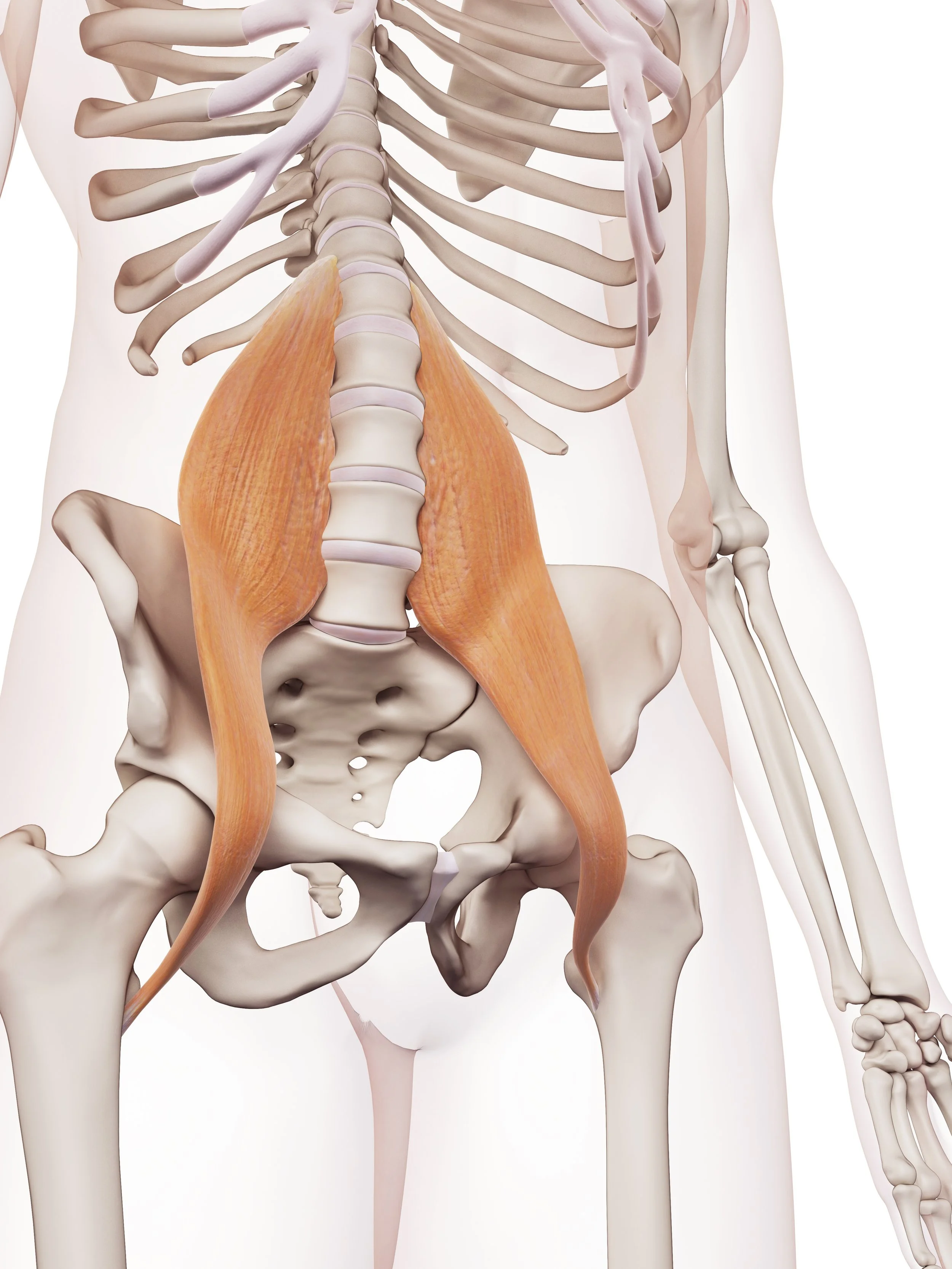Many people are getting familiar with the name of this sometimes hidden and obscure muscle, because of its importance and clinical relevance.
The psoas muscle, or more accurately the iliopsoas muscle group, is part of a broader group of muscle known as the hip flexors. As their name would indicate, their function is to flex the hip. But in reality the iliopsoas muscle group is involved in many more functions and clinical conditions that I would like to briefly highlight below.
– The iliopsoas is a very deep muscle group that is in the anterior part of the lumbar spine. As such it's difficult to palpate part of it. It's also a surprisingly large muscle group. For those among our readers who may be hunters, or butchered their own meat, it's the tenderloin muscle. The circumference of the muscle is larger than that of the spine itself which highlights its importance in the stabilization of the lumbar spine.
– In addition to being a hip flexor, the iliopsoas is a very strong lateral stabilizer of the lumbar spine. Which is why it's important to have a strong healthy and fully lengthened psoas in any persistent lumbar pain.
– The iliopsoas is important for a variety of clinical presentations. We always need to check it in persistent lumbar pain.
– Due to the modern lifestyle associated with frequent and prolonged sitting, the iliopsoas muscle will spend a large amount of daytime in the shortened position. This will create a lot of issues, most notoriously some anterior pelvic tilt of the lumbar spine and compression of the lumbar spine and lumbar discs. It's important if you have a sedentary job to offset this issue with frequent anterior hip extension stretches and gluteal activation.
– The iliopsoas has fascial connections into the thoracic diaphragm, as well as into the quads, and this latter connection can easily influence the function of the quads and normal alignment and tracking of the patella. When people have persistent patella pain, it's worth making sure that the psoas is firing and lengthening normally.
– The psoas influences pelvic tilt, and is an important muscle group to assess when patients have lumbar postural distortion such as a very anterior pelvic tilt.
– Several important peripheral nerves have to make their path through the psoas when exiting the lumbar spine and entering the leg. This would include the main femoral nerve, as well as some continuous nerves which only provides sensory input to the upper thigh such as the lateral femoral cutaneous nerve. Assessing the iliopsoas is absolutely crucial for any anterior leg pain and tingling presentations.
– Manually treating the iliopsoas requires a fair amount of training and experience on behalf of the practitioner due to the location of the muscle group within the abdomen, and close correlation to internal organs as well as traversing nerves.






